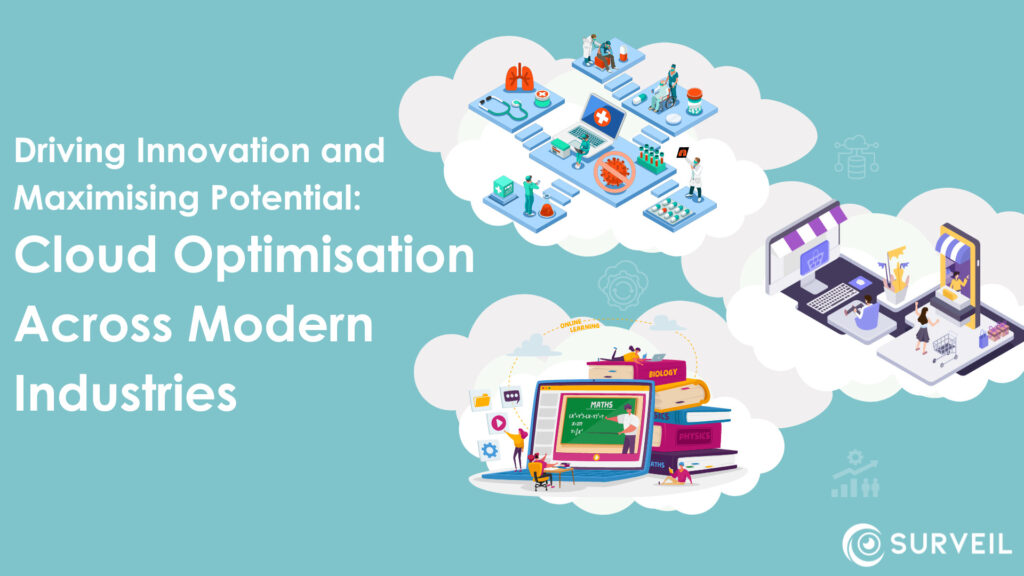Chances are you have heard about how cloud optimisation is transforming the technology sector, but have you considered the role it’s playing in other industries? Cloud optimisation has emerged as a game-changer for businesses across the globe, revolutionising the way workforces operate and transforming their efficiency – here’s how.
Healthcare
According to a recent study, 83 percent of the healthcare sector is currently using the cloud for their core operations. But why is cloud optimisation necessary in the healthcare industry? The high volume of data in healthcare organisations presents the goliath challenge of data management. By optimising the cloud technology they rely on, IT teams can securely monitor a great amount of cloud-based data across the healthcare industry. What’s more, they can also enjoy…
Advanced analytics – By leveraging the cloud, the healthcare industry can analyse vast amount of data from varying sources. Analytics and developing AI solutions can help accelerate medical research and drive innovation. By taking advantage of the cloud, the healthcare industry can process large datasets, allowing for in-depth analysis of large volumes and the generation of valuable insights.
Leading diagnostic technology – Accurate and fast diagnosis plays a crucial role in the healthcare sector – and cloud functions such as machine learning and AI have made great contributions towards advancing diagnostic technology to the next level. Cloud automation, for example, has allowed precises testing structures and fast result sharing, which has cut down on wastage in the diagnostic procedures.
Education
With cloud computing already being used by 43% of universities and colleges, and many more following suit, there is potential for cloud optimisation to elevate education to new levels. According to a recent study, 96% of senior education leaders have acknowledged the value that the cloud has in fulfilling institutional requirements, and 63% of those leaders intend to expand their utilisation of cloud technology. However, despite the clear advantages that cloud optimisation present the education sector, a colossal third of total cloud spending still goes to waste. So, how can they use cloud optimisation to their advantage?
Secure storage of resources – With the abundance of educational resources available for university and college students, it can be difficult to keep track of what’s going on. Cloud optimisation can enable secure storage of digital textbooks, online content, and learning materials, while also indicating where storage is being underutilised. Not only can this provide a more seamless and efficient learning experience, IT teams benefit by being in greater control of what’s happening in the cloud.
Personalised learning experiences – Analytics presented from the cloud will track student performance, identifying areas of possible improvement which can be used in revision periods toward exams.
Scalability to handle varying demands – During busy times such as exam periods, cloud optimisation can allow scalability on resources based on what is/isn’t being used, allowing wastage to be reduced and cost to be reduced. Additionally, the cloud can handle increased user traffic during these busy times, ensuring smooth access to learning materials.
Retail
The retail industry faces unprecedented pressure to keep up with the demands of fast-changing societal trends and customer demand. Utilising cloud optimisation infrastructure can allow the industry to gain access to real-time insights on sales, design unique customer experiences, and much more.
McKinsey. (2018). The cloud as a catalyst for retail. [Online]. McKinsey Digital. Available here.
Insights on sales – Retailers can use insights provided by the cloud to optimise inventory levels and minimise overstocking, which allows them to better plan for the future. These insights will allow businesses to get to know their customers, stay on top of trends and create a sense of community which customers are looking for.
Develop the customer experience – Personalisation ensures that the right products are shown to the right customers, leading to increased revenue. Also, cloud optimisation facilitates the integration of features such as chat bots and self-service portals to allow businesses to offer real-time support and increases customer satisfaction.
Cloud optimisation serves as a transformative aid across all industries, not just the ones we’ve mentioned above. As businesses increasingly delve further into their own cloud infrastructure, they can find opportunities for growth and savings – they simply need a to know where to look.
Do your customers need help having an in-depth look into their cloud environments? Contact us today to see how we can help!






